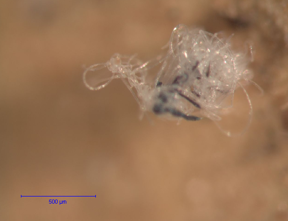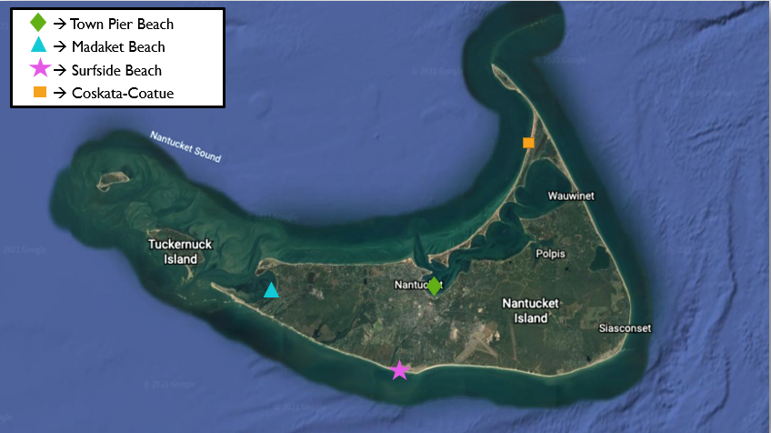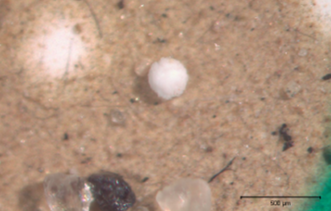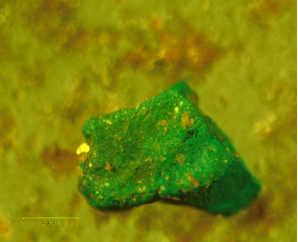- Home
- News
- Recent News
- Measuring Microplastics in the Marine Environment:
Measuring Microplastics in the Marine Environment: A UMass Boston Study with Nantucket Island and the Nantucket Field Station
In 2019, researchers from the School for the Environment at UMass Boston and the Nantucket Department of Public Works commenced a multi-year study on measuring microplastic abundance and composition in the marine environment of Nantucket Island, located off the coast of Cape Cod, Massachusetts. The goal of this project was to create a baseline for microplastic concentrations in intertidal surface sand and seawater on the island. Island ecosystems are useful study sites as they act as “models” of larger coupled human and natural systems. Furthermore, waste management on an island such as Nantucket is complex due to limited space and thus measures to reduce waste (thereby reducing microplastics) are critical.

Microplastics (< 5mm in size) are ubiquitous in terrestrial and marine environments. They originate from both primary and secondary sources. Primary microplastics are plastics that are engineered to be <5 mm, such as microbeads used in cosmetics or “nurdles” which are small pellets that are used as the building blocks for large plastic items (e.g. consumer products). Secondary microplastics occur from the breakdown of large plastic items (> 5mm) known as macroplastics. Through weathering, macroplastics in the environment become brittle and tiny pieces (microplastics) begin to break off. The microplastics are easily transported with ocean currents. Due to their small size, microplastics can be ingested by plankton and passed through the food web. Assessing their abundance in the marine environment is an important step in raising awareness of macro-and microplastic pollution.
As part of my master’s thesis, I worked alongside Dr. Juanita Urban-Rich – Principal Investigator on the project and my faculty advisor – to collect and process (in the laboratory) sand and seawater samples from 2019 and 2020. We collected samples from the Town Pier Beach in Nantucket Harbor, Madaket Beach at Warren’s Landing, and Surfside Beach (see map below) during 2019, 2020, and 2021. In 2021, a fourth site was added along the Coskata-Coatue Wildlife Refuge.
Sites were chosen for differences in their characteristics: e.g. geography, land-use, and recreational/commercial uses. Collections took place during the summer and fall/winter of each sample year to account for the increase (approximately five-fold) in Nantucket’s population from winter to summer. We analyzed samples by sample site and collection date to assess if either variable influenced microplastic abundance.
Microplastics were found in all the intertidal surface sand and seawater samples at all sites, mostly composed of fibers along with instances of films, foams, and hard pieces (see images below). An analysis of macroplastic debris was also conducted at each site during each sample time.
Analysis of 2021 samples is currently ongoing in addition to assessing the composition of plastic polymers found in the samples through Fourier-transform infrared spectroscopy (FTIR). To learn more about the exciting research within the Microplastics Lab at UMass Boston please contact Dr. Juanita Urban-Rich, Juanita.Urban-Rich@umb.edu, and/or myself at Shannon.Hogan@umb.edu.
Funding for this research was provided by ReMAIN Nantucket LLC and the Nantucket Land Council.

A map of Nantucket island and the beach sites where intertidal surface sand and seawater were collected. These sites were chosen for their geographic and land-use differences.

A sphere (e.g. microbead or nurdle) found in a sample of beach sand.

An unidentified microplastic fragment found in a sample of beach sand. Potential sources include buoy foam, paint chip, and hard fragment from piece of macroplastic.